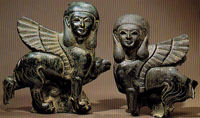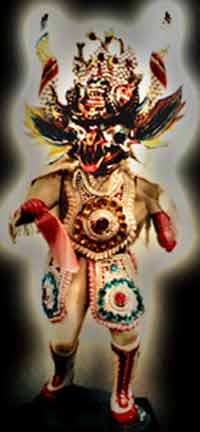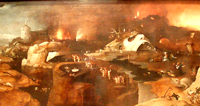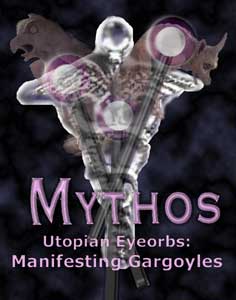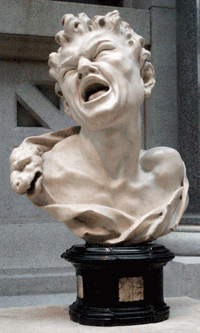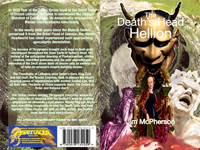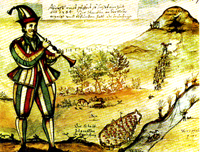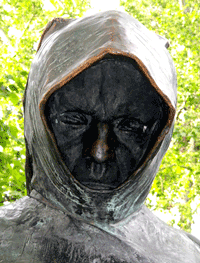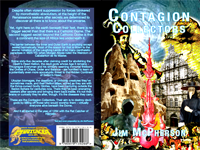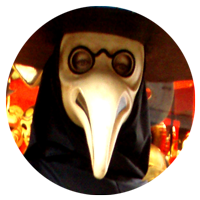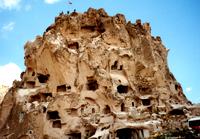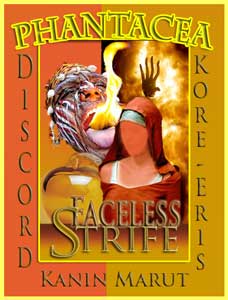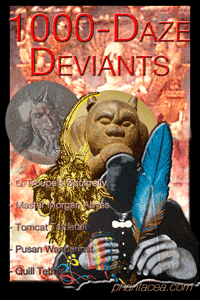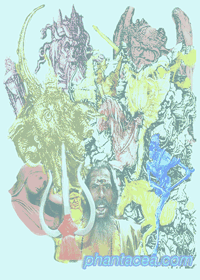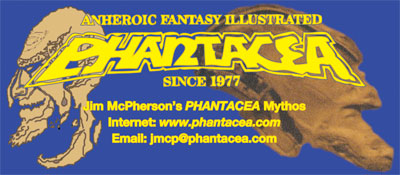phantacea.com - skip banner - get proactive for phantacea - quick lynx - extensive notes on page graphics
Two 1000-Daze Companions
|
|
|
|
The background image for this page is a variation of a black and white collage/cover I prepared for War-Pox's 1000-Daze bonus chapter; notes on many, if perhaps not all, of the images that appear in any of the panel backgrounds or the covers reproduced on this webpage are here;Top of Page - {age Contents - Downwards - Notes on Graphics - Bottom of Page Ordering Lynx |
Anheroic Fantasy since 1977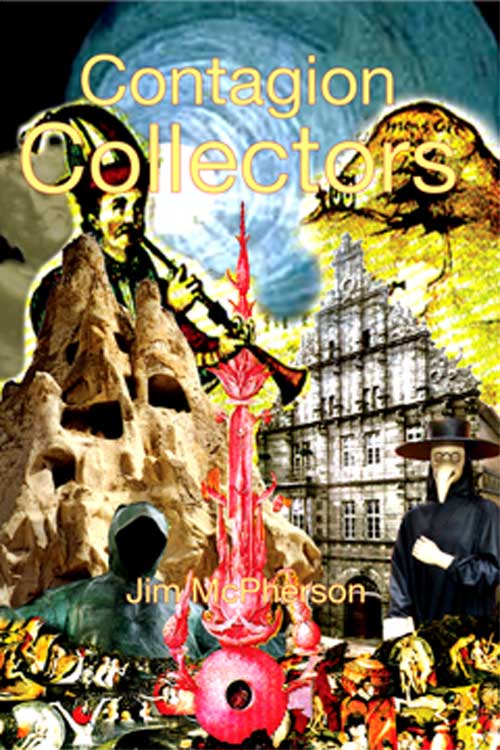
©copyright 1977 - 2011 Jim McPherson |
|
A number of Phantacea Publications, specifically Or, if you prefer to order directly from the publisher, email or send me your order(s) via surface mail. No matter where you live or what currency you prefer to use, I'll figure out a way to fill your order(s) myself. As an introductory offer, I will absorb shipping costs and government taxes on For all the other PHANTACEA Mythos print publications, I'll have to charge an additional 12% to cover Canadian and provincial taxes as well as Canada Post rates for shipping. I do use bubble mailers, though. BookFinder.com lists both mosaic novels: Another interesting option for the curious is Chegg, which has a rent-a-book program. Thus far its search engine shows no results for phantacea (any style or permutation thereof) but it does recognize Jim McPherson (a variety of them) and the titles of the novels. As for the Whole Earth (other than the Hidden Continent of Sedon's Head, at least as far as I can say), well, this page contains a list of a few other websites where you can probably order the novels in a variety of currencies and with credit cards. |
|
... Top of Page ... Top of Section ... On to Character Companions ... Graphics ... Bottom of Page Ordering Lynx ...
The Thrice-Cursed Godly Glories
|
Auctorial Preamble
As one might expect from print publications featuring Jim McPherson’s phantacea Mythos, many of the characters in the mini-novels are immortal or seemingly immortal. Their influence is thus felt throughout the ages covered by the overall trilogy. Indeed, some of those listed below are only mentioned in 1000-Daze whereas as few others, as noted, only appear in one or two of the mini-novels. The extracts that follow are specific to the already-published mini-novels that make up 1000-Daze. I have also edited them such that I don’t give away too much of the storyline. The complete book-specific extracts can be found at the beginning of each mini-novel. In other words … Support phantacea – Place your orders today! As always, good reading! ... Top of Page ... Top of Section ... On to Hellion's Companion ... Go straight to Hellion's Index ... On to Contagion's Companion ... On to Graphics ... Bottom of Page Ordering Lynx
... Top of Page ... Top of Section ... Down to the Shining Ones ... Graphics ... Bottom of Page Ordering Lynx |
1. Shining Ones: First, Second and Third Generation Devils
========
========
========
========
========
========
========
========
========
========
======== ... Top of Page ... Top of Section ... Back to Index ... Back to the Shining Ones ... Down to Earthborn Characters ... Graphics ... Bottom of Page Ordering Lynx |
2. Deviants, Demons, Faeries and Mandroid Monstrosities
========
========
======== ... Top of Page ... Top of Section ... Back to Index ... Back to Earthborn Characters ... ... Down to Utopians on Earth ... Graphics ... Bottom of Page Ordering Lynx |
3. Mortal Descendants of Original Extraterrestrials
... Top of Page ... Top of Section ... Back to Hellion's Index ... Back to Utopians on Earth ... On to Graphics ... Bottom of Page Ordering Lynx |
... Page Contents ... Top of Page ... Top of Section ... Downwards ... On to Graphics Table ... Bottom of Page Ordering Lynx ...
Sedon Plague 5456 to 5476 –
|
|
1. Shining Ones: First, Second and Third Generation Devils
|
1. Shining Ones: First, Second and Third Generation Devils
======== |
2. Deviants, Demons, Faeries and Mandroid Monstrosities
======== |
3. Mortal Descendants of Original Extraterrestrials
======== |
4. Norman & Norma Notables
******** |
... Page Contents ... Top of Page ... Top of Section ... Upwards ... On to Graphics Table ... Bottom of Page Ordering Lynx ...
Lynx to the Latest Graphics and Text Excerpts| Images that went into Hellion's cover | Images that went into Contagion's cover | Sedon, Great Gods and the Fauns Frolic Image | Herta Heartthrob and more Master Devas | Strife, Fecundity and a couple of actual Deviants | Vetala gets nasty, a Demonic Demiurge, Utopians and Ring-Gotten Devils | Direct Lynx to Bosch and Durer images elsewhere | Notes on the Page and Panel Backgrounds |- double-click to enlarge images (except the last two) - |
|||
Tomcat Tattletail
I shot this satyr in NYC's Met Museum in 2009 Tomcat Tattletail is the faerie-type Harmony is so enthralled with in Hellion. There's more on him here, here, here, here and here. Even though I've collected a few other likenesses of Tomcat, which currently sit in my archives awaiting a mini-essay on him, I decided use this one because of the anguished facial expression. As for why he goes by the Q-name of Squirrelly in Hellion, hey, just look at him. Iteration of Image in Fauns Frolic collage - Iteration of Image in the phantacea logo area - Top of Section - Upwards
|
The Death's Head Hellion
The front and back cover for the original digest version of There's an enlargement of the Cosme Tura picture here; there's another here, along some more details as to why I decided it represents Master Morgan Abyss. As for why I refer to her as the Weirdom of Cabalarkon's demonically-empowered Master, well, guess whom she somehow got hold of after she got rid of the devil possessing her. Or, if you're not one for guesswork, you could just click here, here and/or here. Iteration of Image in the phantacea logo area - Top of Section - Upwards
|
NYC's Faux Bosch
Many painters tried to emulate Bosch's style in the 16th and 17th centuries. I took this picture of one such painting (unaccredited as near as I could discover) in New York City's Metropolitan Museum in 2009. I use part of it to represent Magnus Minus, the mighty Minotaurus of Minius (Absudyl), which lies directly beneath the Weirdom of Cabalarkon (Sedon's Devic Eye-Land on a map of the Hidden Headworld).
Double-click on the map to enlarge it to its 1978-standard black on white format. A clickable version of it is on the Peculiar Places page whereas the more than just moderately amazing story of what I spotted in Cairo's Egyptian Museum is retold here and here. There's more on Magnus Minus, who appears as a daemonic demiurge in Hellion, here, here and here. Iteration of Faux Bosco in the phantacea logo area - Iteration of Map in Sedon Section - Top of Section - Upwards |
Daemonic Royalty (Daemonicus & Primeval Lilith)
The figure representing Primeval Lilith, the Demon Queen of the Night, is by Henry Fuseli (1741-1825). He called her Great Night so how could I not choose her to stand in for one of phantacea's most misunderstood stand-outs? Below Lunatic Lily (who's still a mass murderer no matter how justifiable her actions could be considered), the Smiling Fiend, or someone similar, seems to be in one of his two-eyed Daemonicus moments. I took it from a postcard I bought in Germany back in 2008 whereas the background is from a postcard I bought in Sintra, Portugal, on that same 6-week European vacation. As for whether Demon Queen Lilith or Demon King Daemonicus-Smiler even appear in either mini-novel, well, let's just say not explicitly and leave it at that. Iteration of Image in the phantacea logo area - Top of Section - Downwards |
The Rat-Catcher of Hamelin
Yes, I cannot spot the signature of Jordan "Q for Quill" Tethys in this shot either. Yes also, in the Legendarian's defence, it is a copy of the a stained glass window he purports to have done early in the Outer Earth's 14th Century. And, no, none of the rats are tee-tees. They're children. The koppen or calvary-like hillock is shaped like a tholos. though. As for the cave's entrance, well, at a stretch it might pass for a skull-shape or golgotha. Myself, though, I don't stretch that far. The copy reproduced here dates to 1592. It's by Augustin von Moersperg. The actual window was destroyed in 1660. (This information is from FT 264, of which more here.) Iteration of Image in the phantacea logo area -Top of Section - Upwards |
The Anonymous Fiend
The Smiling Fiend is obviously not smiling in this shot of Budapest's famous Anonymous. That said, given what Smiler's main attribute appears to be throughout the phantacea Mythos — namely that no one can remember him unless he's standing right in front of him or her and mindfully wants them to remember him — Anon has to be him. It's almost impossible to hit a webpage on either of the two main phantacea websites that doesn't reference Smiler. One taken from Hellion is here. A bunch of others link from here, here and here. Iteration of Image in the phantacea logo area - Top of Section - Upwards
|
Contagion Collectors
The front and back cover for the original digest version of Bosch's 'Ascent of the Empyrean' provides the background on the front and back covers; lynx to it and his Garden of Earthly Delights are below
The original blurb re the Contagion Doctor is here Iteration of Cover Image in the phantacea logo area - Top of Section - Upwards
|
Hoodoo Housing
I shot the cliff-dwellings or, as they're called there, hoodoo housing in Cappadocia when I passed through it again in 2003. Although they're not usually found on the coast of rainforests, something about the air beneath the Sedon Sphere allows for exceptional, um, exclusions from normality. The double-click opens a new window with a larger version of the one I used on the Contagion cover. This one is more mound-like, which fits with who built the Hoodoo Hamlet visited in the mini-novel. There are three brief travelogues re my trips to Turkey linked from here; the spookiest one, appropriately entitled 'The Phantom Train and other not quite Turkish delights', is here. Iteration of Image in the phantacea logo area - Top of Section - Downwards |
Fauns Frolic Feverishly
Sooth said, they do a lot more than frolic feverishly – and I'm not just referring to how fabulously they play the Syrian or panpipes. For one thing, if this collage can be trusted (which it can't), they also seem to float contentedly once they're done whatever they were doing ever so feverishly. It all has to do with the pheromones they secrete, you see. As for why this collage can't be trusted, as both Harmony and her triplet brother, Lord Order, discover in Hellion, demons do fauns just as well as they do anything else – which is to say, well enough for the moment. Simultaneously, or at least almost in the same moment, Uncle Abe and Bedazzling Belialma discover denim-demons can do double-duty as panting pants. All in all, they'd thereafter all agree, if they got the chance, it's a very hardening experience all around. Except, that is, for phantacea's most famous fauna, Pusan Wanderlust. For her, the experience isn't so much electrifying as it is electrocuting. Iteration of Image in Pusan section - Top of Section - Upwards |
There's only ever one winner of a Sedonplay
Dark Sedon is a notorious gamesman. But is he actually playing a game in I could answer that but I'd rather you read Hellion yourself. There's more on this graphic here. - Iteration of Image in Sedon Section - Top of Section - Upwards
|
The Great God Lazareme as Thrygragos Everyman |
Helios order Machine Memory to nuke Weir StarThe Trigregos Sisters appeared in pH-2, pH-4 and the graphic novel, They have yet to appear to appear in any of the mosaic novels but their terrible talismans certainly do, otherwise I'd have to come up with a different title for 'The Thrice-Cursed Godly Glories'. As for the Dual Entities, well, it may yet prove they appear whenever Thrygragos Lazareme or his indescribable daughter Harmony, the Unity of both Balance and Panharmonium. There's more on this graphic here.
There's more on the Sedonshem landing, and who it landed on top of in 666 PD (Pre-Dome), here. Iteration of both images in this column - Top of Section - Downwards |
The Luscious Lady Lust
Hell's Belle lives her attribute. In Feel Theo, she seems primarily interested in Cruel Plathon, the Bull of Mithras. In Hellion, she bounces from Uncle Abe Chaos (Unholy Abaddon) to his father, Thrygragos Lazareme, to his hated brother, Lord Order. In Contagion, well, she only has a short but telling conversation with Harmony before she heads back to Chaos for some extracurricular star-gazing. As for Iteration of Image - Top of Section - Upwards
|
Herta Heartthrob
Dire, age 4, is a Norman Notable. In phantacea pHact he's actually Albrecht Durer, whom you may have heard of before. Dire and the hound Drang (whose name I admittedly also made up) appear a few times during Contagion. It's my contention that Durer, like Bosch and the notorious Spanish inquisitor, Torquemada, were recruited by Contagion Collectors organized by Quoits Tethys (whose main agents were Tomcat Tattletail and Herta Heartthrob) and thereafter actually spent some time on the Hidden Headworld. Strikes me as obvious, especially when it comes to Bosch and Durer. I mean, where else would they have come up with such fantastical imagery firsthand, especially at the tail end of the Outer Earth's plague-ridden 15th Century? Top of Section - Upwards |
Lathakra's Death God of Heat and Fire
Standard wisdom has it that bygone Illuminaries of Weir (on Earth) came up with Methandra's name by combining letters making up Mediterranean Athena (Minerva in Roman Mythology). I'm pretty sure it actually derived from the name of Crete's Mother Goddess, who lived on Strongyne (modern day Santorini) until the infamous day Novadev got drunk and blew its heart into the sky. But, hey, who am I to argue with standard wisdom. I'll leave that to Wisdom of Lazareme, who's quoted here (right next to where I cribbed this image.) Top of Section - Upwards |
Lathakra's Death God of Cold and Ice
The Death God's of Lathakra (Cold and Heat) are Mithradite firstborn. Their triplet brother is Phantast Thanatos, the Death God of Dream. Phantast doesn't appear in 'The Thrice-Cursed Godly Glories' Trilogy. He isn't mentioned very often either. And when he is it's usually in the same sentence as Strife and the Crimson Conspiracy of circa 4000 YD. Tantal and Methandra do, however, especially, as per here, in Hellion. As does their azura daughter Klannit (the Mirror Mentalist). Top of Section - Downwards |
Mithras's Golden Avenger
Just because Faceless Strife, Mithras's so-called Ewe for Aries and the devic half-mother of Taurus Chrysaor Attis, doesn't appear in Hellion, that doesn't mean devils realize it. Top of Section - Upwards
|
Daddy Cabby's Champion
At least that's one way of thinking about Morgan Abyss, the Master of the Weirdom of the Cabalarkon (Sedon's Devic Eye-Land on a map of the Hidden Continent) in 4824/5. It may or may not be the way she thinks about herself. It certainly isn't the way devils think about her, especially after the events of the Infernal Equinox. Until then they probably didn't think about her very much at all. If they did, which Harmony did prior to Mithramas 4824, they likely reckoned her Pyrame's shell. Top of Section - Upwards |
Deviancies and phantacea
Some of 1000-Daze's Deviants include, as noted in this graphic, Q-Troupe's Squirrelly, Master Morgan Abyss, Pusan Wanderlust, Tomcat Tattletail and the ever-present Jordan 'Quill' Tethys. Images incorporated in this collage come from a variety of places, Durer included. The quill's actually taken from a wall painting I spotted and shot in Vancouver some years back now. As per here, I also used it on the cover for
|
Nergal Vetala as Fecundity
She waxes and wanes with the moon, on a monthly basis, but as the Nergalids' Grower, she's also related to fertility goddesses such as the Roman Ceres (hence our word 'cereal'). The thing about Ceres and her ilk is they're mostly perceived as beneficent. Vetala is too, at least initially and especially by the Iraches of Sedon's Mutton Chop (on a map of the Hidden Continent). Of course, they like nothing better than having their ancestors over for tea and buttered scones. Top of Section - Downwards
|
Vetala's also a (very nasty) Moon Goddess
The reference is mainly to what she, when in seductress mode, does to Pyrame Silverstar in Feel Theo. She's much better behaved in Hellion and Contagion, though she does suggest to Order that he cathonitizes himself, which isn't a very nice thing to say to a Master Deva. (As per here, it's way worse than telling a devil to go f**k himself, which of course is what Geld Neargon does whenever he-she desires azuras.) Top of Section - Upwards
|
Magnus Minus, the Mighty Minotaurus of Minius
Minius is Absudyl, the Subterranean Land of the Mandroids, beneath Sedon's Devic Eye-Land on a map of the Hidden Continent of Sedon's Head. As for who made Minus in the first place, the double-click suggests Pyrame Silverstar. One mustn't forget who she was occupying, unless it was the other way around (as would seem the case in Hellion), throughout most of the Head's history, however. Top of Section - Upwards
|
Utopians of Weir
There were (as opposed to 'are') two Weirworlds. The second one is where the Trigregos Sisters were last seen in the comic books and graphic novel. There are also a variety of different kinds of Utopians in phantacea. Hybrid Utopians, who are no longer purebloods, are mostly found outside the Weirdom of Cabalarkon (Sedon's Devic Eye-Land on a map of the Hidden Headworld). As such they dominate proceedings in Contagion. Pure U-Bloods are the focus in Hellion, however. That said, Morgan Abyss, the Master of Cabalarkon throughout the mini-novel, isn't even a hybrid. That doesn't mean she doesn't hate Sedon, though. Far from it! Top of Section - Upwards |
Ring-Gotten Devils
Virtually ever since I began phantacea on the Web in (gasp!) 1996, I've run a feature entitled Serendipity. It chronicles all sorts of serendipitous discoveries that make me wonder how much I've actually made up and how much of phantacea is real. Consider now ringots. Those familiar with the comic books (Aristotle 'Ringleader 2' Zeross) and/or the Web Serials (Angelo 'Ringleader 1' Zeross) will have recognized them straightaway. Centuries before either Zeross, father or son, came along, they figure rather irreplaceably in both Hellion and Contagion. Intriguingly, nay serendipitously, guess what Bosco, age 26, must have spotted in the not precisely aforementioned Garden of Earthy Delights besides the Juggler (double-click for a cut-out)? Yep, a ringot — and not just any ringot either but one containing Metisophia, the Legendarian's devic half-mother. How do I know this? Well, in Aka Titanic Metis, she doesn't feature in Hellion because she's been ring-gotten. (Her purloined cauldron does, however.) And the Juggler's on the cover of Contagion at least in part because his belly shows Metis ring-gotten. Only, I just realized that about a year after I prepared the cover. Talk about serendipity delayed. Top of Section - Downwards |
In terms of Bosch, I took the Juggler and the lower edge of the front cover for Contagion from a triptych entitled 'The Garden of Earthly Delights'. For reasons made clear therein, it's called the garden of earthy delights in Contagion. The mini-novel also makes clear that Bosch didn't make it up — at least he didn't within the phantacea Mythos. 'The Ascent of the Empyrean', which appears on both the front and back cover of Contagion, is one-fourth of a major work entitled 'Visions of Beyond'. The version I used is from a poster replacing the actual painting in the Doge's palace of Venice. Apparently the original was being cleaned while I was there in 2008. As for Durer, the putto (who once ate Sinistral Envy), Drang (not yet a dachshund, thus not yet having wolfed down the murine crud containing Camorva Freeflight) and Herta Heartthrob (a technically daemonic, hence soulless, earthborn eidolon given flesh) come from Melancholia. (Should perhaps add, as a bonus teaser, that Herta is a melancholic angel in the sense that she has wings and is lovely, except she seems plagued by sadness at her own lack of fulfillment. Above all else, she wants to wholly devour the Unity of Balance, whom even she perceives as Beauty Incarnate, instead of simply settling for gathered-up scum-cream left behind on Tholoi hearthstones that Harmony used to get to the Outer Earth in pursuit of Tomcat Tattletail long, and often, pre-book.) Both Death and the goatish Devil came from 'The Knight'. The 'Four Horsemen' came from just that. The British Museum has piles of Durer's prints. It even puts out a small hardcover that can probably be ordered online as if just to prove it. I scanned in the ones I used for the covers on this page, as well as its background images, from art books I already had at home. Just by the bye, as per here, Durer's Death looks a lot like old King Cold, Tantal Thanatos, did in the comic books. Which is doubly appropriate since Cold is one of the aforementioned Death Gods of Lathakra – the other being immediate sister Methandra, Hot Stuff, Mithras's Virgin (in both Feel Theo and Hellion, though no longer in the comic books) or just plain Heat (after her attribute) – and Thanatos is the name of the Ancient Greek God of Death. Just as interesting (to me anyhow), Durer's Devil might well be someone the recurring deviant, Pusan Wanderlust, would fall for in both Hellion and Contagion. That's because, as per here, Pusan's a female faun or fauna and everyone knows what fauns are best at doing, a lot. It's also why I incorporated Durer's Devil into the Deviancies graphic. NOTE: the last two images in this panel don't double-click. They roll over, rather effectively I feel.Top of Section - Downwards |
|||
The background image for this page is taken from part of a black and white collage/cover I prepared for War-Pox's 1000-Daze bonus chapter; as also per here I did a colour version of it as well; a perhaps too busy variant is here; also on this page a light greenish version can be seen here and here; an even lighter version of it can be seen here; double-click on the images in this panel for blow-ups of the page backgrounds. Return to the image rollovers here. Some of the shots that went into these collages can also be seen here and here; here and here provide hints as to the identities of three mainly minor players in |
... Recommence ... Top of Page ... Fresh Graphics ... Bottom of Page Lynx ...
Webpage last updated: Summer 2011
|


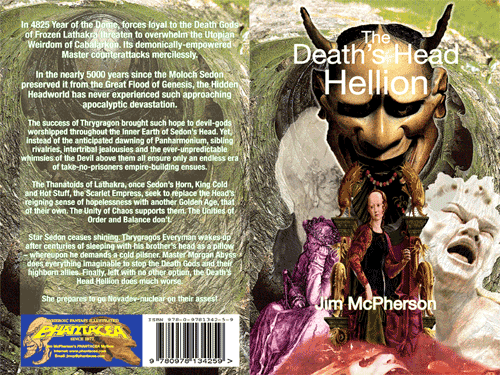

 Character Companions for mini-novels extracted from
Character Companions for mini-novels extracted from 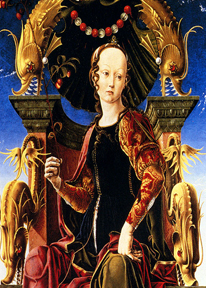 (Extracted from a capsulated character companion for ‘The Thrice-Cursed Godly Glories’ Trilogy)
(Extracted from a capsulated character companion for ‘The Thrice-Cursed Godly Glories’ Trilogy)
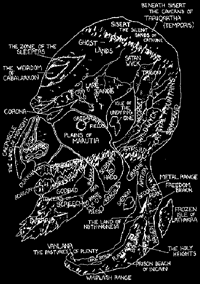
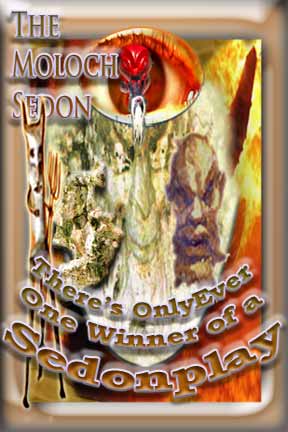
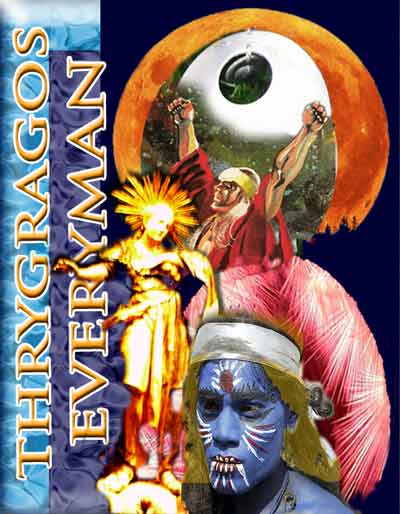 the Three Great Gods are Thrygragos Lazareme (aka sometimes the Lackland Libertine, but most commonly Thrygragos Everyman), Thrygragos Byron (aka both Bodiless Byron and the Unmoving One due to that fact that he’s all head, with his facial features frozen in the same expression, not because he can’t transport himself wherever he wants on the Inner Earth), and Thrygragos Varuna Mithras (who does not appear in
the Three Great Gods are Thrygragos Lazareme (aka sometimes the Lackland Libertine, but most commonly Thrygragos Everyman), Thrygragos Byron (aka both Bodiless Byron and the Unmoving One due to that fact that he’s all head, with his facial features frozen in the same expression, not because he can’t transport himself wherever he wants on the Inner Earth), and Thrygragos Varuna Mithras (who does not appear in 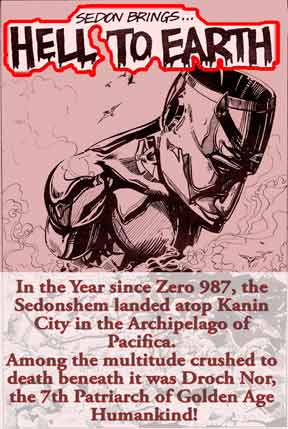

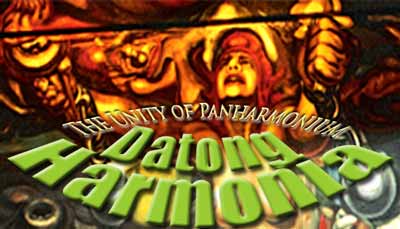
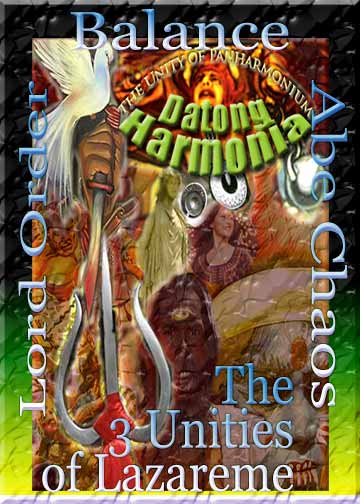 - considered something of a scatterbrain in that he changes his outward appearance frequently, sometimes without even realizing he’s done so.
- considered something of a scatterbrain in that he changes his outward appearance frequently, sometimes without even realizing he’s done so.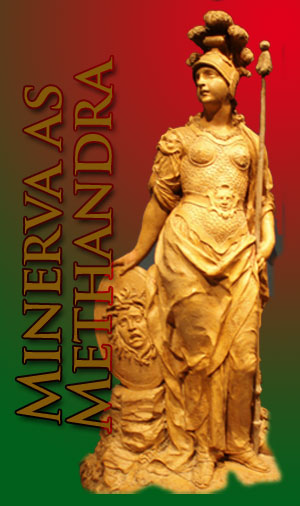
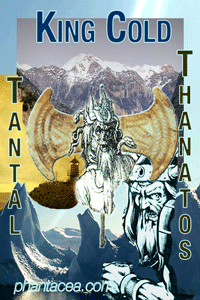 - the Frozen Isle of Lathakra (off the Cattail Peninsula, on a
- the Frozen Isle of Lathakra (off the Cattail Peninsula, on a 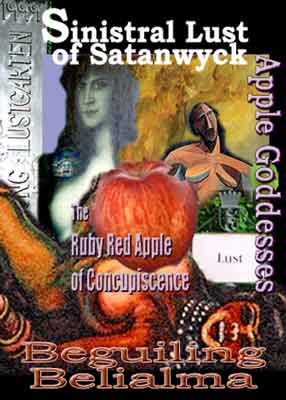 -
Hell’s Belle, also sometimes called the luscious or lascivious Lady Lust as well as Bouncing, Beguiling or Bedazzling Belialma and variations thereof;
-
Hell’s Belle, also sometimes called the luscious or lascivious Lady Lust as well as Bouncing, Beguiling or Bedazzling Belialma and variations thereof; 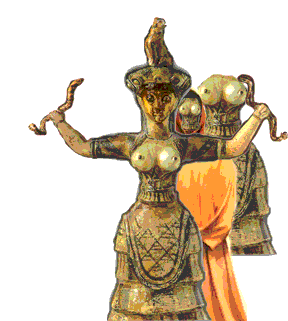
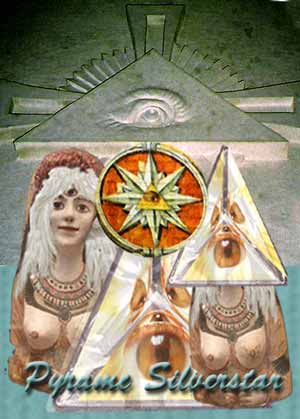
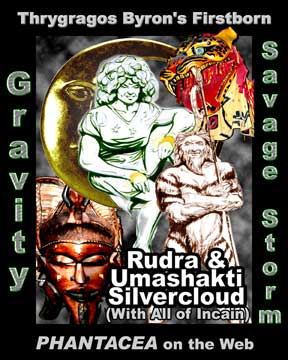 brother-husband to sister-wife Umashakti;
brother-husband to sister-wife Umashakti; 
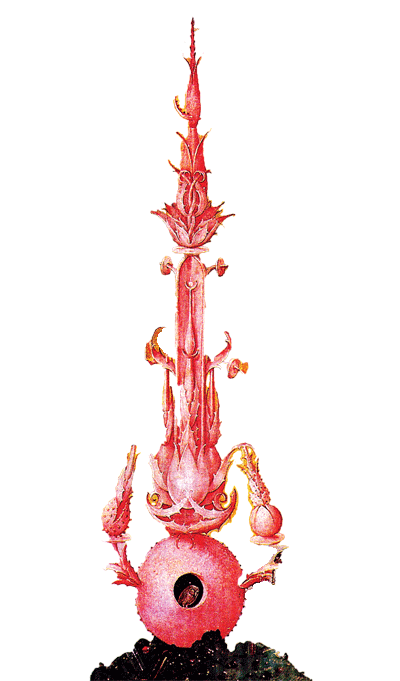 —
— 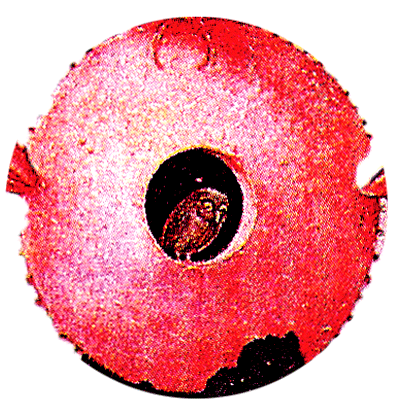
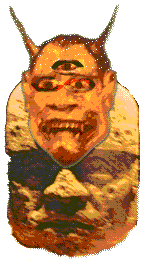
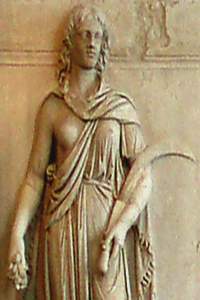
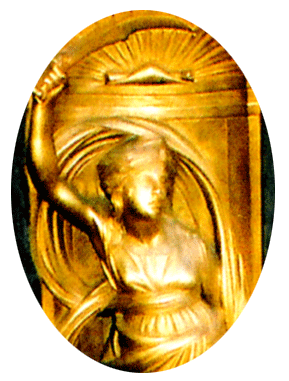 - a presumed twelfth-born (presumed because even Mithras was never certain what
- a presumed twelfth-born (presumed because even Mithras was never certain what 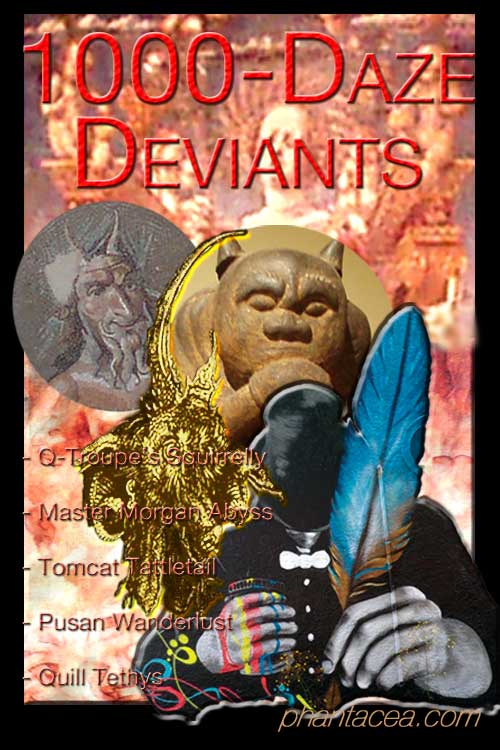
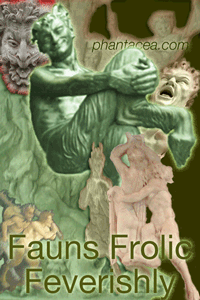 - in this respect she’s like garudas, mutated ravendeer, the psycho-
- in this respect she’s like garudas, mutated ravendeer, the psycho-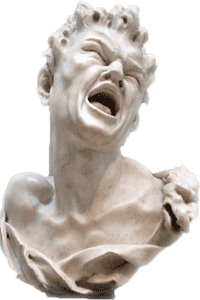
 —
— 